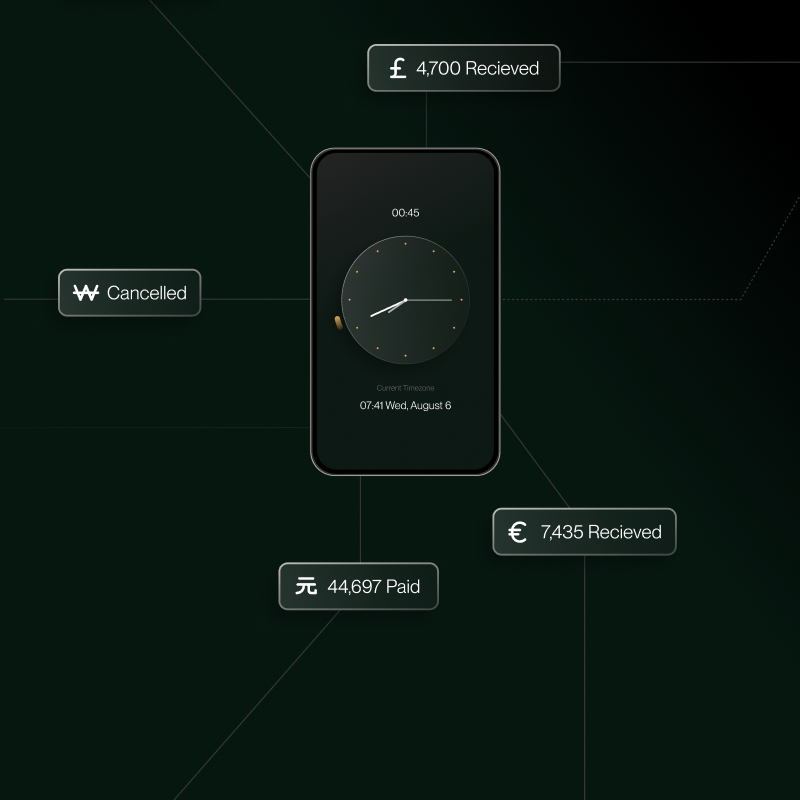Wire Transfer vs. ACH: Differences and When to Use Each
The following article is offered for informational purposes only, and is not intended to provide, and should not be relied on, for legal or financial advice. Please consult your own legal or accounting advisors if you have questions on this topic.
If your business moves money electronically, understanding the differences between wire transfers and ACH transfers is critical. While both are secure and efficient payment methods, they work in different ways and are best suited to different scenarios. Choosing the right one can save your company time, money, and headaches.
This guide breaks down wire transfer vs. ACH, explains when to use each, and compares them across speed, cost, security, and use cases to help you make informed decisions.
What is an ACH Transfer?
An ACH transfer is a type of electronic payment that moves money between banks using the Automated Clearing House network. It’s typically used for:
- Direct deposits (e.g., payroll)
- Bill payments
- Vendor payouts
- Recurring subscription charges
ACH payments are batch processed, meaning they are grouped together and processed at scheduled intervals — often once or twice per business day. Because of this, ACH transfers usually take 1–3 business days to complete, though some banks now offer same-day ACH options.
There are two types of ACH transactions:
- ACH Credit: The sender pushes funds to another account (e.g., payroll).
- ACH Debit: The recipient pulls funds from another account (e.g., an ACH withdrawal for monthly rent or services).
What is a Wire Transfer?
A wire transfer is a direct, bank-to-bank payment processed in real time. Wires are used when speed and certainty are essential.
Wire transfers are typically used for:
- Real estate closings
- Urgent or high-value supplier payments
- International transactions
- One-time or time-sensitive payments
Because wire transfers are handled individually and verified manually by banks, they usually settle the same day, often within hours. Unlike ACH, wires are irreversible, making them more secure for finalized payments.
Key Similarities
Despite their differences, ACH and wire transfers share a few core traits:
- Both are electronic payment methods.
- Both can be used for business-to-business (B2B) and business-to-consumer (B2C) transactions.
- Both offer secure, bank-verified transactions.
- Both are alternatives to paper checks and manual processes.
ACH Transfer vs. Wire Transfer: Key Differences
Below is a side-by-side comparison of the most important features to consider when evaluating the difference between ACH transfer and wire transfer:
When to Use ACH vs. Wire Transfer
Each method has its place in a well-managed finance stack. Use the guide below to decide which one fits your transaction:
ACH Transfers Are Used When:
- You’re processing recurring or predictable payments
- You want to keep transaction costs low
- You’re sending funds domestically
- You have flexible timing (1–3 business days is acceptable)
Examples:
- Paying freelancers or employees
- Paying monthly software subscriptions
- Sending vendor payments with predictable due dates
Wire Transfers Are Used When:
- The payment is time-sensitive or high value
- You need to send funds internationally
- You require confirmation of receipt the same day
- The transaction must be secure and final
Examples:
- Large equipment purchases
- Real estate closings
- Emergency vendor payments
Choosing the Right Payment Method for Your Business
As your business grows, having both ACH and wire transfer options available ensures you can manage cash flow efficiently while meeting the needs of different stakeholders.
Tips for managing transfers effectively:
- Automate ACH payments for recurring expenses
- Confirm wire details carefully to prevent fraud (especially internationally)
- Set clear policies for when each method should be used
- Use expense management tools like Flex to track payments and avoid duplication
Final Thoughts
Understanding the difference in ACH and wire transfer options empowers your finance team to be more strategic and cost-effective. While ACH transfers offer a reliable, low-cost solution for everyday payments, wire transfers provide unmatched speed and security for large or urgent transactions.
By knowing when to use each method, your business can move money with confidence — whether you’re paying a vendor across the country or closing a deal across the globe.

















.jpg)




.svg)